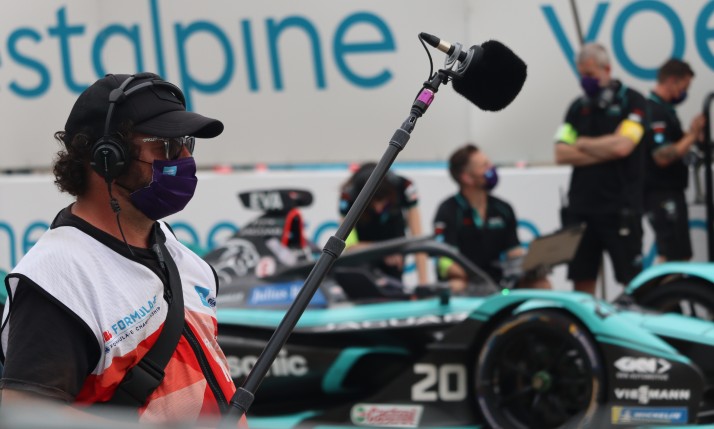Opinion: Why sports broadcast audio production needs ever-more automation in the battle for eyeballs
 By Jeroen Dieks, chief product officer and co-founder at Lean And Mean Audio (Lama)
By Jeroen Dieks, chief product officer and co-founder at Lean And Mean Audio (Lama)
Even before the tsunami of change that the COVID crisis has forced on the broadcast industry there already existed a number of trends that were applying pressure to the existing workflows and technologies of broadcasters.
Factors ranging from the explosion of over the top (OTT) content and the resulting ‘battle for eyeballs’, the need for more customised content, the ability to work more remotely, the need to find trained talent to replace an aging workforce, and the need to be more sustainable, are forcing broadcasters to find innovative ways to deliver ever more content, faster and with less resources.
Automation in video production technology was already well established before the COVID crisis. Most video switchers have so many macro features that the operator can control many at once with simple key-presses. In comparison, audio has been much slower to embrace innovation and reinforces the image of being the slightly conservative and ‘poor cousin’ of video.
Sunlight-deprived audio engineer
The traditional picture of broadcast audio production is that of a sunlight-deprived audio engineer, sitting behind an impressive mixing desk in a dedicated control room. Taking the audio feeds from multiple sources, these engineers craft their broadcast mixes with the art and science of levelling, panning, EQ and compression. Although the introduction of digital mixers made the craft slightly faster and easier with the ability to easily recall settings, broadcast mixing has remained a relatively manual process that requires the hands-on experience of a trained audio engineer.
But what audio automation methods have already existed to-date and how have they been used in the broadcast industry?
The most common method is based on technology that was first developed in the 1970’s by the industry veteran Dan Dugan, the inventor of the automatic microphone mixer. Facing the challenge of mixing multiple microphones for live events, Dugan invented a hardware solution that reduced the level of a microphone’s audio signal when it was not being talked into. This system created a transparent sounding mix and lowered the noise and bleed that occur when several microphones operate simultaneously. It also enabled audio engineers to mix more complex projects without having to ‘chase the mix’ by manually riding faders.
When Dugan’s patent expired, similar technologies were implemented by a number of hardware console manufacturers and some of these were subsequently used for basic automation of levels in broadcast audio.
Innovation in automation
In regards to the other elements of a mix, namely the input gain, EQ, compression and master output levels, innovation in automation was predominantly in the form of software VST plugs. Although these tools were used in post-production, they were not widely adopted for live audio.
With the recent trend in the industry of the adoption of digital connectivity standards such as AES67, SMPTE ST 2110 and NDI 5, the implementation of software solutions has become more realistic in the creation of live broadcast audio. This in turn has opened the door to a future of advanced automated software solutions that require the high performance that servers can deliver, be it on premise or in the cloud.
Now we are beginning to see the rise of a new generation of companies that deliver the automation of all elements of a mix for live broadcast audio. These solutions generally work by using intelligent DSP or artificial intelligence (AI) to determine what are the important parts of the incoming audio, after which they make mixing decisions that mimic both the art and science of the audio engineer. Such solutions are already being used in sports broadcasting to allow operators to easily create tens of mixes singlehandedly.
When Dugan introduced his automatic microphone mixing system back in the 1970’s, he was confronted by audio engineers who were resistant to change and were afraid that this system would make them redundant. The reality was that these systems became viewed as a useful tool that was needed to deliver the quality the market demanded, for the budgets that were available.
At Lama we believe that the market trend for ever more content creation will continue to apply pressure on the number of trained audio engineers and production budgets. In recent years, we have already seen a trend where one engineer would need to deliver two or three mixes at the same time using regular mixing desks. We believe that this number will keep going up as the battle for eyeballs plays out, to the point where engineers will not be able to guarantee quality without the help of smart tools.
As we have all clearly seen during the COVID crisis, change is never easy or a straight road, but we look forward to working closely with broadcasters to make this new future a reality.
